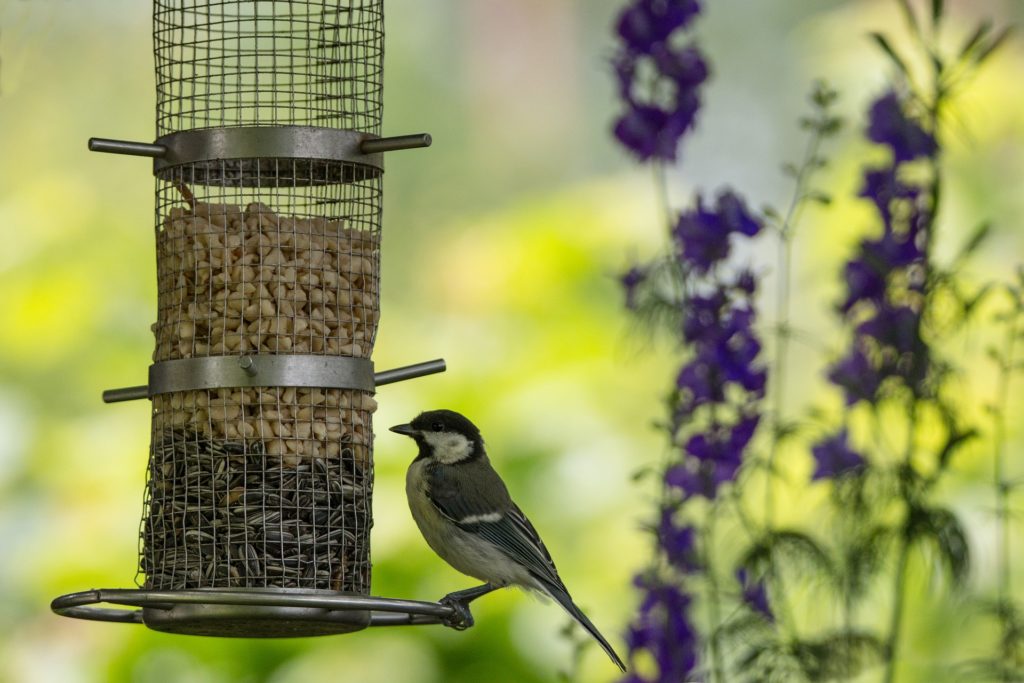Birdy in the Window
Looking for a pet that does not need to be housebroken, groomed or trained? How about a flock of them? If so, consider making the front or backyard a haven for wild birds.

With very little effort, one can enjoy the sights and sounds of these feathered friends all year long.
The best way to attract birds to a yard is by providing plenty of food and water.
“Most commercial feeders will work fine as long as they are sturdy, easy to clean, and have adequate drainage,” advised Dr. Ian Tizard, director of the Schubot Exotic Bird Health Center at the College of Veterinary Medicine and Biomedical Sciences at Texas A&M University.
Tizard says where the feeder is placed is more important than what type of feeder it is.
“No bird wants to take the risk of getting ambushed. Feeders should be near enough to foliage that birds might use it to flee from predators,” said Tizard.
However, birds will be wary of feeders and baths placed too close to bushes since predators can easily spring from nearby foliage in a surprise attack.
“Birdhouses should be placed in a way that mimics the location of the birds’ natural habitat,” Tizard explained.
For as many types of feeders that are available, there are at least as many kinds of birdseed. Tizard recommends sunflower seed for attracting the widest variety and most colorful birds, including cardinals and finches.
Some mixes are designed to attract only certain birds, so consult the package labeling for this information.
Keeping birdfeeders, baths, and houses clean is also crucial to keeping healthy, happy birds visiting the backyard.
“Cleaning feeders and houses will keep harmful mold from growing in them. Wood feeders, which can be difficult to clean, are not usually recommended,” said Tizard.
“Supplying birdfeeders and baths causes more birds to congregate than would under normal circumstances,” explained Tizard. “For this reason, disease may spread more quickly, but keeping feeders and baths clean can minimize the spread of disease.”
Tizard suggests using a solution of one part household bleach to two or three parts water for effectively cleaning feeders and baths. At the very least, they should be cleaned once a year, but may require cleaning more often where exposure to the elements has fouled the seed and/or water. Birdhouses are usually vacated during the winter months, so you’ll want to clean them out then to prepare for spring’s new tenants.
Hummingbirds require special considerations.
According to Tizard the best way to attract hummingbirds is to design a garden full of colorful, fragrant flowers.
“It is okay to provide hummingbird feeders with homemade nectar as a supplement, but be aware that the males can be territorial,” Tizard explained. “Providing more than one feeder will ease the aggression associated with hummingbird males who will claim one as his own.”
Since homemade nectar can spoil, it is important to keep a fresh supply in clean feeders.
Also, it is important to note that feeders placed too close to windows may actually be more harmful than helpful. Birds are often injured or killed flying into windows when the birds mistake the reflection in the glass for sky. You can reduce the chances of window injuries by placing stickers or other reflection-marring materials on your windows.
Silhouette bird stickers can often be purchased where birdseed is sold. These window stickers intimidate smaller birds, keeping them from flying into a window.
It is relatively inexpensive to create an environment that will attract wild birds. By simply seeing to their needs, a backyard can become a playground that is literally for the birds.
Pet Talk is a service of the College of Veterinary Medicine & Biomedical Sciences, Texas A&M University. Stories can be viewed on the Web at vetmed.tamu.edu/news/pet-talk. Suggestions for future topics may be directed to editor@cvm.tamu.edu.


